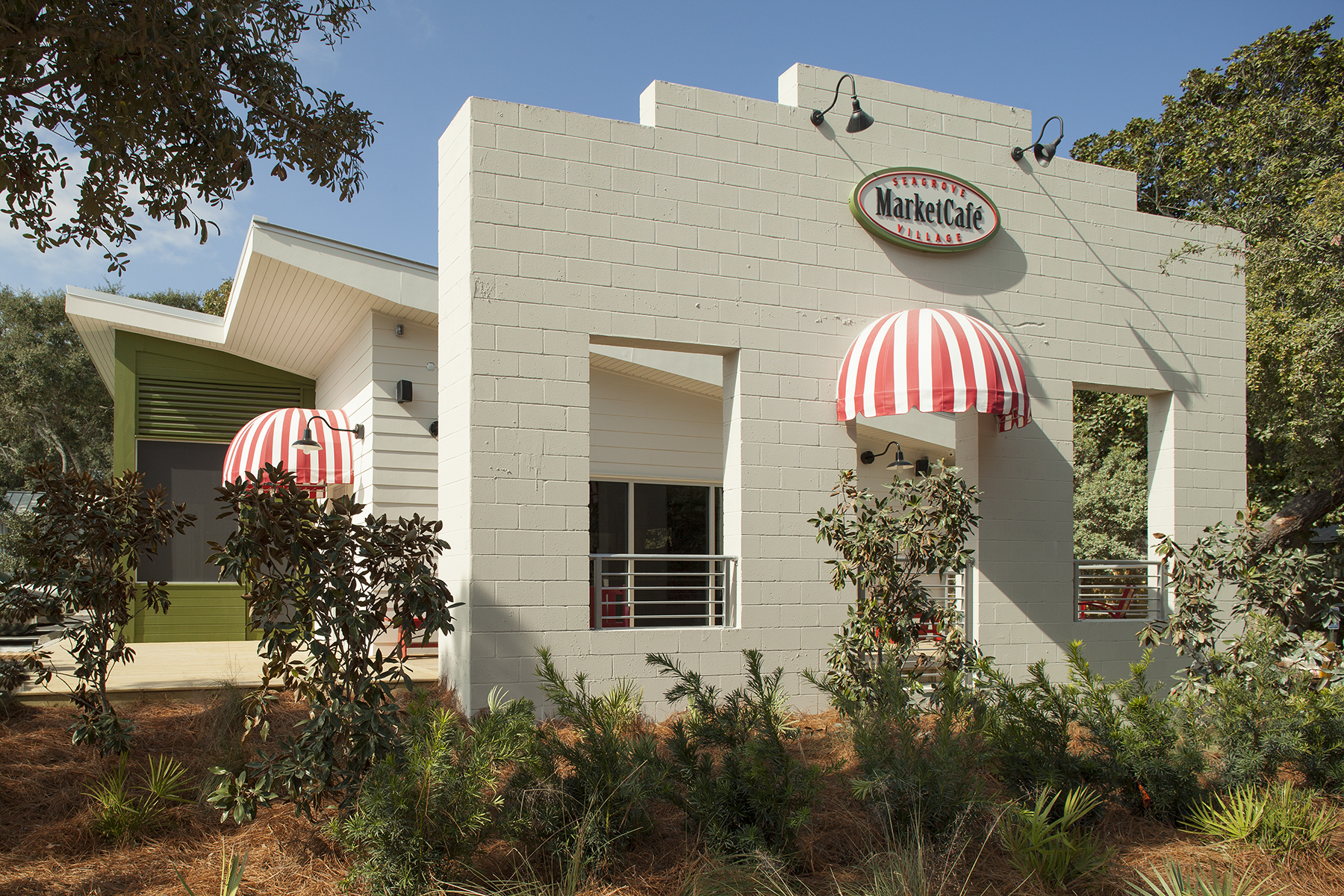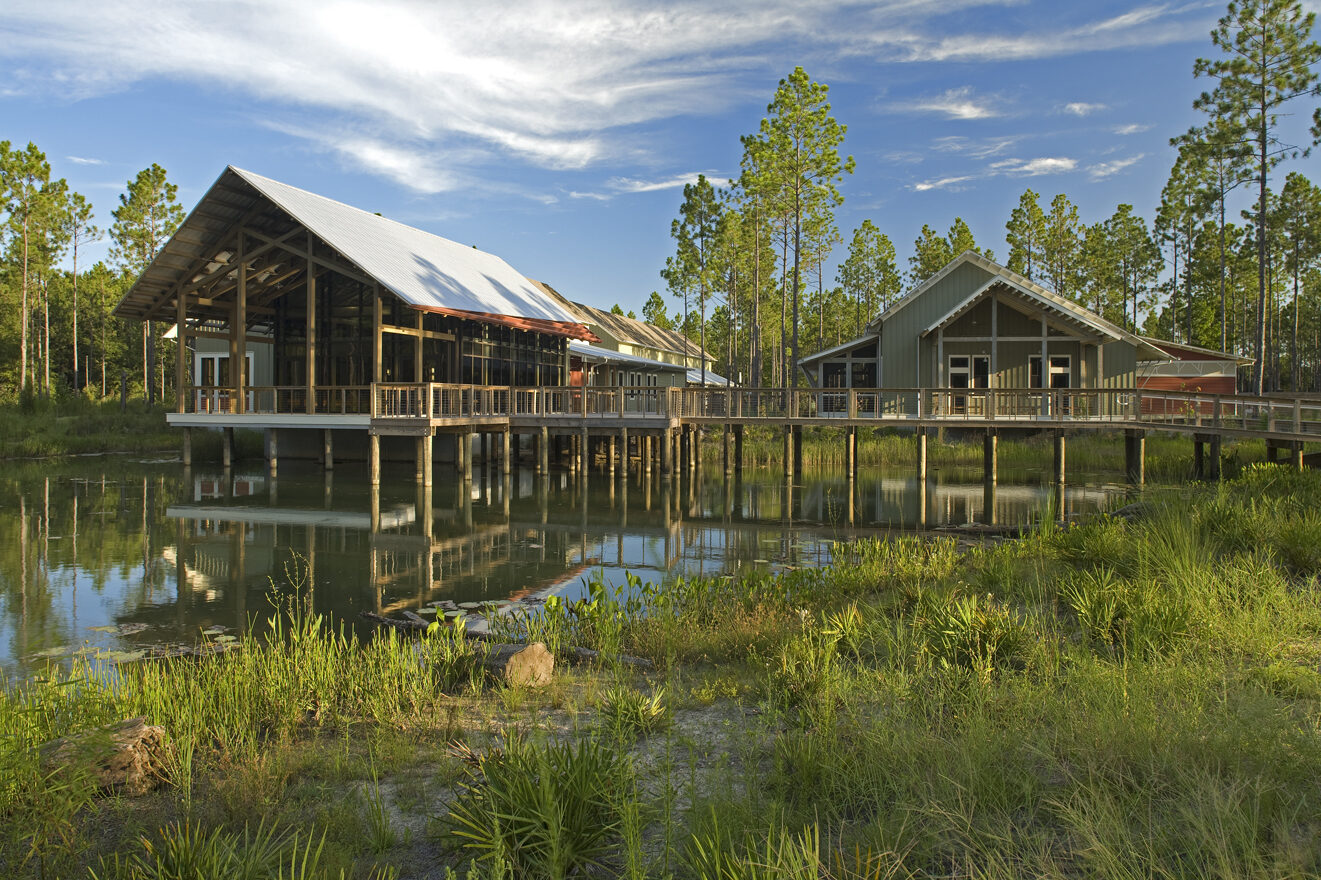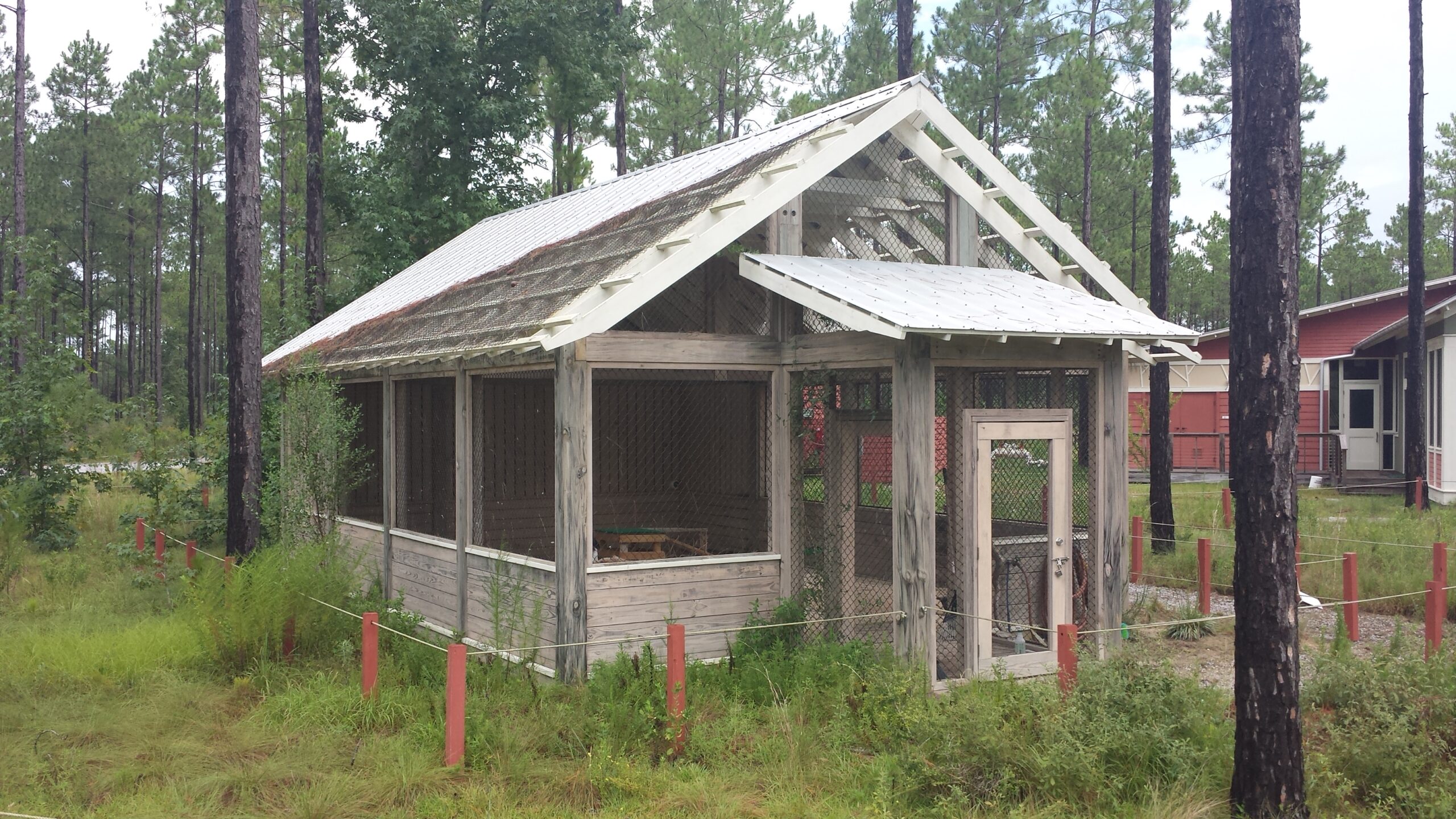Grayton Beach, Florida 2024
The forthcoming Grayton Beach Visitor Center is set to offer tourists and residents an enriching experience far beyond basic amenities like indoor plumbing. Designed as a gateway to both history and environmental education, the center presents these elements in a uniquely engaging manner.
The design team, committed to environmental preservation, set a precondition for accepting the project: the conservation of the existing dune and scrub live oak on the site. Adhering to this commitment, the architectural plan incorporates a sinuous pathway mimicking those found in natural dune systems. This path not only serves as a protective measure by diverting storm surges—which could otherwise undermine the dunes—but also enhances the structural integrity of the retaining walls. The curved lines of these paths are intentionally designed to resist lateral forces, and reduce footing sizes to protect the tree roots. Additionally, individual pilings extend out to catch the second floor deck, protecting also protecting the tree roots from damage.
Within these retaining walls unfolds a narrative of local heritage and natural history. At the street level, embedded within the wall structures, visitors encounter exhibits detailing the historic evolution of downtown Grayton Beach. Visitors follow a path through the center, guided by a beach mouse (a symbolic navigator), who introduces visitors to the intricate dune ecosystem.
As the journey continues westward, the focus shifts to aquatic ecosystems, showcasing the marine life typical of the Gulf Coast, including jellyfish, shellfish, and other sea creatures. This transition not only educates visitors about the diverse local wildlife but also connects them to the broader environmental context of Grayton Beach.
The architectural form of the visitor center draws inspiration from the local history, particularly the pyramid wood structures used during World War II as navigation aids for training pilots. This historical reference is woven into the design, reinforcing the center’s role as a custodian of local heritage.
Beyond its educational purpose, the visitor center is envisioned as a communal hub, celebrating Grayton Beach’s rich history and offering a vision for a future free from vehicular tourist traffic, as the center will serve a practical function as a trolley stop, facilitating easy access and encouraging the use of public transport.
In summary, the Grayton Beach Visitor Center is designed to be more than just a building; it is a multifunctional space that educates, inspires, and gathers the community. It stands as a testament to the commitment to preserve and celebrate the natural and historical assets of Grayton Beach, making it a landmark both residents and visitors can cherish.













































